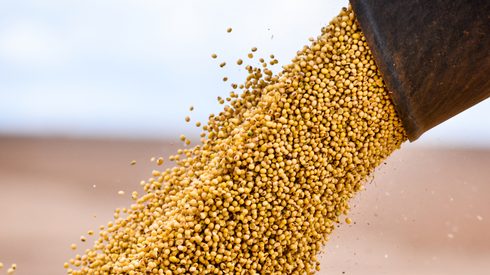Exports of sunflower oil from Ukraine’s Black Sea ports under a “grain corridor” agreement between the UN, Ukraine, and Turkey have increased to 14,000 tonnes, market sources said Wednesday.
A vessel carrying 7,500 tonnes of sunflower oil, the Efe, left the port of Odesa early Wednesday and headed to a Turkish port on the northern coast of the Iskenderun Gulf.
The first cargo carrying sunflower oil under the “grain corridor” framework, the Mustafa Necati, which left the port of Chornomorsk on August 7 and headed to Italy, safely passed through the Bosphorus Strait on August 16, according to line-up data.
Russia’s invasion, which began earlier this year on February 24, resulted in the blockade of deepwater ports and a total halt to sunflower oil exports by sea from Ukraine, the world’s largest exporter.
In the pre-war period, exports of sunflower oil by sea exceeded 96%, while land exports were 3-4%.
Alternative export routes
In March, after the Black Sea ports were blocked, the share of exports by land increased to 58%, according to local analysts APK-Inform.
The result was an increase in exports of Ukrainian sunflower oil to end buyers through European ports and to buyers in the EU by road and river transport through the Danube ports, while supply volumes decreased and the costs increased significantly due to the lower capacity of such export routes.
According to Ukraine customs statistics, monthly exports of sunflower oil by alternative sea routes, truck, rail, and barge amount to about 150,000-280,000 tonnes, while the delivery time has increased to 20-40 days depending on the route, which is almost twice the delivery time by sea.
From March to August 16, sunflower oil exports amounted to 1.1 million tonnes, which is 37% less than the amount exported from March to July in the 2020-21 season.
From the beginning of the 2021-22 season to August 16, Ukrainian exports of sunflower oil amounted to almost 4.3 million tonnes.
APK-Inform analysts, who considered two options for future Ukrainian exports of sunflower oil, concluded that maintaining export supplies through the Danube river ports, by rail and road would lead to lower volumes, while resuming exports by sea would lead to higher export volumes.
Under the first scenario, according to APK-Inform, exports of sunflower oil in the 2021-22 season could fall to 3.1 million tonnes and by 29.5% compared to the previous season.
According to the second scenario, exports could increase to 4.7 million tonnes, which is almost 7% higher than last year’s exports.
Keep up to date with what’s happening in the vegetable oils market by reading our latest report.





